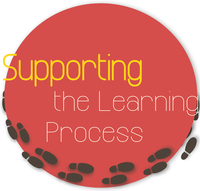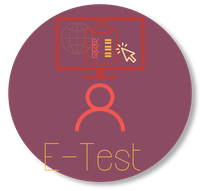Supporting the Learning Process
 |
You can also support the learning process of your students in various ways using different e-learning tools: By a structured presentation of relevant terms (technical terms, vocabulary etc.) for example by means of a glossary or MindMap, by visualization of complex relationships for example by simulations, the Virtual Microscope in Stud.IP or a MindMap.
This page is constantly growing with the project and is regularly filled with new content. Unless otherwise stated, the following sources are valid: e-teaching.org • ilias.uni-giessen.de/ilias |
|---|---|
 |
E-Test Accompanying e-tests can help learners to determine their own level of knowledge. The e-tests can be easily created and automatically evaluated via ILIAS to provide direct feedback to the students. The following video shows possible implementations in ILIAS: https://www.youtube.com/watch?time_continue=139&v=ekQ09fVLnsQ (in german) In addition to the e-tests in ILIAS, Stud.IP also allows for simple tests with single and multiple choice questions, which unfortunately, can only consist of one question. ILIAS offers much more possibilities and is more recommendable for this purpose. Examples for the various ILIAS question types can be found here. (Source: https://ilias.uni-giessen.de/ilias/goto.php?target=cat_18439 (Accessed: 10.22.2019 : translated by Lehre 4.0 team)) |
 |
Flashcard-Training The flashcard training in ILIAS consists of 5 different sections. The flashcards in the starting section should be trained daily, those in the 2nd section every 2 days, those in the 3rd section every 4 days, etc. A card that is remembered during a training moves one compartment further back, a difficult card remains in the same compartment and an unremembered card moves back into the starting compartment. (Source: https://ilias.uni-giessen.de/ilias/goto.php?target=cat_29717 (Accessed: 12.06.2019 : translated by Lehre 4.0 team)) |
 |
Virtual Microscope The virtual microscope integrates the Zoomify-Plugin via Stud.IP. This offers the possibility to microscope certain objects on a mobile device and to learn the correct names of the displayed components in the specimen. |
 |
Glossary In a glossary, terms and definitions are assigned to each other. The definitions can contain not only text, but also any kind of media objects, such as images, tables and lists. In addition, digitally supported learning modules on ILIAS can be linked directly to the glossary so that the definitions are displayed directly when clicking on the terms. This can make it much easier to understand complicated texts and facilitates the learning flow. (Source: https://ilias.uni-giessen.de/ilias/goto.php?target=cat_27476 (Accessed: 10.22.2019 : translated by Lehre 4.0 team)) |
|
Etherpad The web-based editor Etherpad allows groups of students to write collaborative texts in real-time. Parts of sentences can be deleted and rewritten, and errors can be corrected. Every change made by all participants is displayed in real-time. The pad is available to all course participants, after it has been initialy created and released by the course administrator. Available with English subtitles. |
|
 |
Mindmap With a mind map the relations between terms are displayed graphically. Starting from a central term, branch systematics are formed to further key concepts. A visualization of chain of associations is thereby made possible. This video illustrates how a mind map can be constructed. (Source: https://www.e-teaching.org/materialien/glossar/mindmap (Accessed: 10.22.2019 : translated by Lehre 4.0 team)) |
